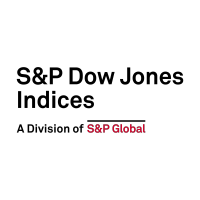Tag Archives: retirement
Why Income Should Be The Outcome And The Need For Independent Indices
With the passage of the Setting Every Community Up for Retirement Enhancement Act of 2019, better known as the “SECURE Act”, and subsequent Department of Labor rules on lifetime income disclosures, the shift towards income-focused outcomes for America’s plan participants is well underway. I was reminded of the importance of this topic after watching the…
- Categories Multi-Asset
- Other Tags
Income-Focused Strategy Indices Show Resilience in 2020 (Part 2)
In part 1 of this blog, we saw how falling real interest rates reduce the retirement income a given account balance can support. In part 2, we focus on how interest rate risk may potentially be managed through an income-focused asset allocation. The S&P STRIDE (S&P Shift to Retirement Income and Decumulation) indices measure the…
- Categories Fixed Income, Strategy, Thematics
- Other Tags
Income-Focused Strategy Indices Show Resilience in 2020 (Part 1)
Retirement investors faced numerous investment headwinds in 2020. In addition to heightened volatility in the stock market, they had to cope with falling interest rates on both regular and inflation-indexed bonds. Real interest rates, interest rates that have been adjusted to remove the effects of inflation, are especially relevant for retirement investors because lower real…
- Categories Fixed Income, Strategy, Thematics
- Other Tags
Performance of the New S&P Risk-Managed Target Date Indices
In a previous blog, we explored the glide paths of the S&P Risk-Managed Target Date Indices. In this post, we will compare the index construction of the S&P Risk-Managed Target Date Indices with that of the S&P Target Date Indices and examine their performance. Index Construction of the Baseline S&P Risk-Managed Target Date Indices Each…
- Categories Multi-Asset
- Other Tags
Introducing the S&P Risk-Managed Target Date Indices
S&P DJI recently launched the S&P Risk-Managed Target Date Indices. In this post, we will explore the characteristics of these indices in detail. Each index consists of two component indices: a baseline S&P Target Date Index based on an underlying glide path and an S&P 500® Managed Risk 2.0 Index. The S&P 500 Managed Risk…
- Categories Strategy
- Other Tags
The Target Date Industry Needs Appropriate Benchmarks
Target date funds have seen tremendous growth. At the end of 2019, assets in target date mutual funds reached nearly USD 1.4 trillion, impressive growth from USD 256 billion a decade ago.[1] Other than a brief dip in the fourth quarter of 2018, the growth of assets has been fairly stable with an upward trajectory…
- Other Tags
How is the Current Environment Impacting Your Retirement?
Explore how our new quarterly dashboard on S&P STRIDE can help investors better understand and plan for retirement with S&P DJI’s Hamish Preston. Get the latest dashboard: https://spdji.com/documents/commentary/dashboard-stride-2020-03.pdf.
- Other Tags
The Uncommon Average
The US stock market has delivered an average annual return of around 10% since 1926.[1] But short-term results may vary, and in any given period stock returns can be positive, negative, or flat. When setting expectations, it’s helpful for investors saving for retirement to see the range of outcomes experienced historically. For example, how often…
- Categories Equities, S&P 500 & DJIA
- Other Tags
- Categories
- Equities, S&P 500 & DJIA
- Other Tags
How Is Your Undefined Benefit Plan Going?
I have probably been receiving them for years, but lately I have noticed opposing position papers in my inbox. Some claim Americans need a revival of defined benefit (DB) plans because of a looming retirement crisis, while others contend that defined contribution (DC) plans are doing great and there is no cause for alarm. DC…
- Categories Uncategorized
- Other Tags
- Categories
- Uncategorized
- Other Tags
2018 Retirement Funding Update for DC Account Holders
2018 produced negative absolute returns across a number of asset classes, particularly international stocks. A broad benchmark of stocks traded outside of the U.S., the S&P Global ex-U.S. BMI (US Dollar) Gross Total Return Index, lost 14.18% of its value. Nevertheless, many investments kept pace with the change in cost of securing future retirement income,…
- Categories Equities, Fixed Income, Uncategorized
- Other Tags
- Categories
- Equities, Fixed Income, Uncategorized
- Other Tags















































